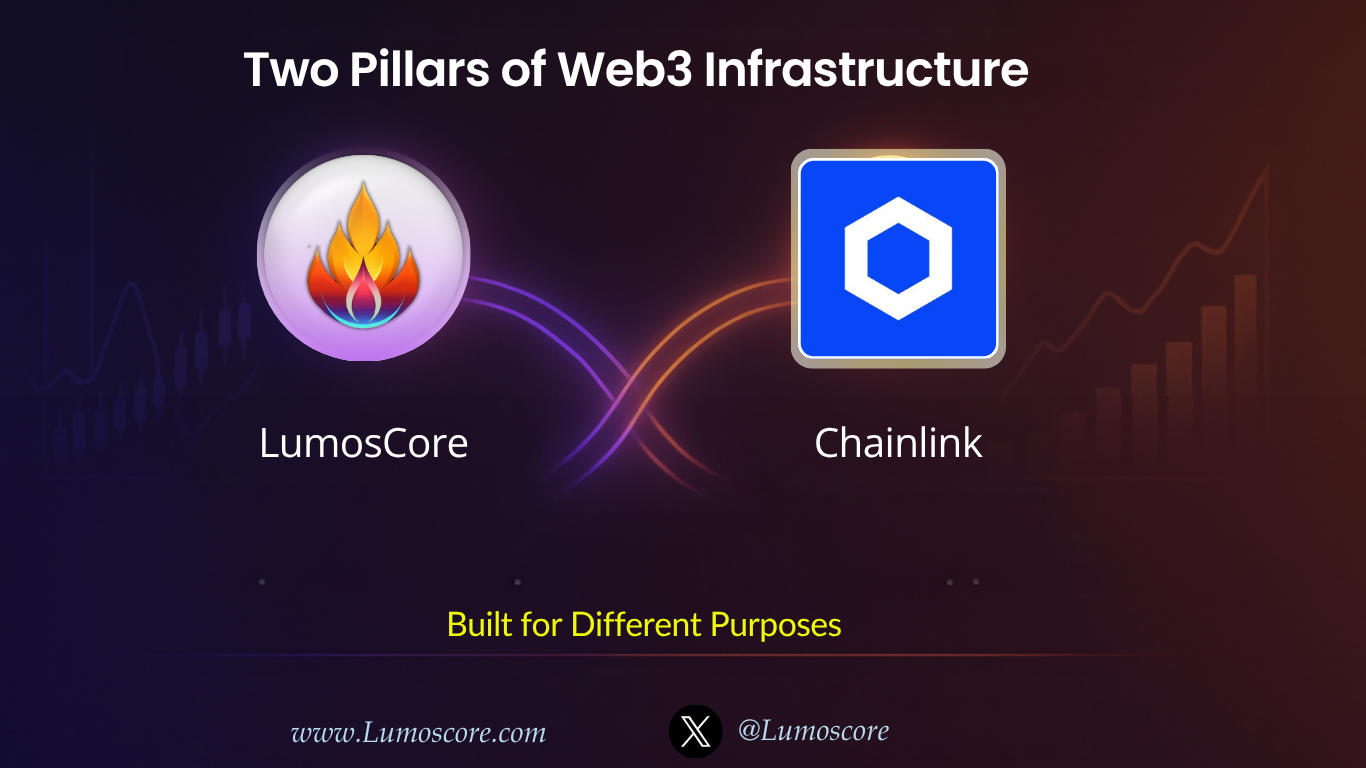From the Blogs
Learn how to grow your business with our expert advice.

LumosCore vs Chainlink: Two Pillars of Web3 Infrastructure — But Built for Different Purposes
The Web3 world is growing fast — and with it comes confusion. Many projects operate in the “infrastructure” layer of blockchain, but not all serve the same purpose. Two names that often come up in conversation are LumosCore and Chainlink.
At first glance, both appear to be multi-chain infrastructure platforms — but in reality, they power different layers of the decentralized ecosystem. Understanding that difference reveals how they actually complement each other rather than compete.
---
Chainlink: The Oracle Network Powering Smart Contracts
Chainlink is one of the most important oracle networks in blockchain. Its main purpose is to *connect smart contracts with real-world data* — such as price feeds, APIs, events, or off-chain computation.
Without Chainlink, smart contracts would live in isolation, unable to verify external information. Chainlink solves this by using a decentralized network of nodes that fetch and verify data from trusted sources, then feed it securely into the blockchain.
That’s why it’s often called the data layer of Web3. It provides reliability, security, and decentralization for developers building DeFi protocols, insurance systems, and on-chain applications that rely on real-world information.
Chainlink is for developers and blockchains, not for end users. You don’t trade, farm, or create NFTs on Chainlink — you use it indirectly when a dApp integrates its oracles to keep data accurate.
---
LumosCore: The User Layer of Multi-Chain Web3
While Chainlink ensures the data layer works seamlessly, LumosCore focuses on the user layer — the place where people and projects actually interact with blockchain.
LumosCore is a non-custodial, multi-chain infrastructure platform that unifies decentralized tools and ecosystems under one roof. Instead of being limited to a single chain, LumosCore connects multiple networks, currently supporting Stellar and XRP Ledger, with upcoming integrations for Hedera (HBAR) and Solana.
Here’s what users can do on LumosCore:
* Create and trade tokens via the Launchpad and DEX
* Mint and sell NFTs on the NFT Marketplace
* Provide liquidity and earn rewards through AMM and farming modules
* Form or participate in DAOs for decentralized governance
* Bridge assets between chains using the Cross-Chain Bridge
* Explore transactions with the built-in multi-chain Explorer
* Build utilities like token creation and mass payments with Developer Tools
Everything operates on-chain and non-custodially — meaning LumosCore never holds or controls user funds. You stay in charge of your assets at every step.
---
Different Layers, One Ecosystem
Think of the blockchain stack as a pyramid:
* Top Layer – User & Application Layer: LumosCore
* Middle Layer – Blockchain Networks: Stellar, XRPL, HBAR, Solana, etc.
* Bottom Layer – Data & Oracle Layer: Chainlink
Both projects are vital. LumosCore makes blockchain accessible and functional for users and projects, while Chainlink ensures that the information powering those blockchains is accurate and verifiable.
In a sense, LumosCore builds the roads, tools, and marketplaces of Web3 — and Chainlink keeps the traffic lights and signals running smoothly in the background.
---
Why Both Matter for the Future of Web3
The decentralized world needs both infrastructure layers to evolve together. Without oracles like Chainlink, smart contracts wouldn’t have access to real-world data. Without platforms like LumosCore, users wouldn’t have a unified space to interact, build, and govern across chains.
LumosCore’s mission is to solve blockchain fragmentation — to connect ecosystems that currently operate in silos and make them interoperable. Chainlink’s mission is to connect data to blockchains — to make those ecosystems smarter and more reliable.
Together, they represent two pillars of Web3:
* One focused on interoperability and user empowerment (LumosCore)
* The other focused on data integrity and reliability (Chainlink)
---
The Vision Ahead
LumosCore isn’t trying to replace oracles — it’s building the infrastructure where oracles, users and projects all coexist in one unified ecosystem.
As the platform expands into Hedera, Solana, Ton, Algorand, and beyond, it’s creating a bridge between fragmented communities and networks — turning isolated ecosystems into one connected universe.
Because the future of blockchain doesn’t belong to one chain or one protocol —
It belongs to the ones who unite them all.
---
Explore LumosCore at [lumoscore.com] and follow [@LumosCore] for updates on the multi-chain future of Web3.
